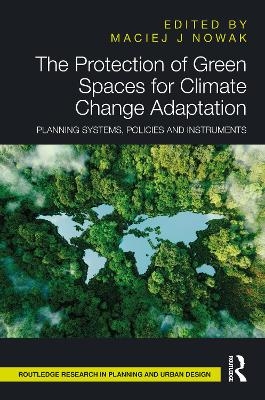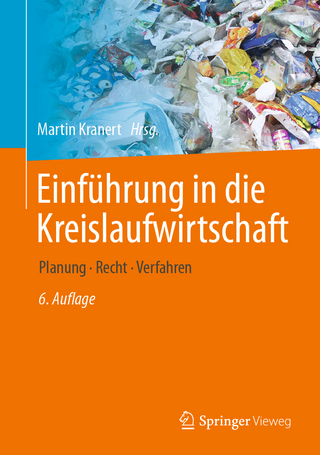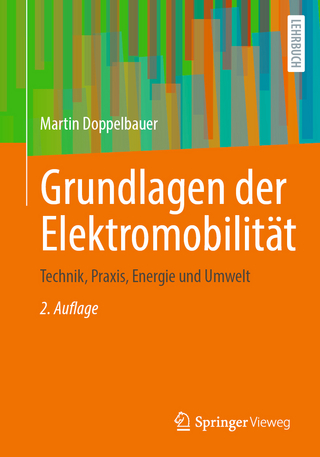
The Protection of Green Spaces for Climate Change Adaptation
Routledge (Verlag)
978-1-032-64536-0 (ISBN)
- Noch nicht erschienen (ca. März 2025)
- Versandkostenfrei innerhalb Deutschlands
- Auch auf Rechnung
- Verfügbarkeit in der Filiale vor Ort prüfen
- Artikel merken
This book identifies how, in each case, spatial planning instruments can influence the protection of green spaces, and whether – and if so how – they are being adapted in response to actual and expected effects from climate change. In doing so, the institutional frameworks of each country analysed are first presented. This provides the basis for discussing the key problems occurring at the state (and city) level in responding to the challenges of climate change adaptation, especially for the protection of green spaces. In the individual chapters, the issues identified above will be analysed from the perspective of diverse countries: Australia, Ghana, Iran, Mexico, Brazil and Poland. The contributors in this edited collection will present how the indicated issue is identified in systems that are diverse in many respects. This book concludes by demonstrating how the relationship between climate change adaptation and spatial planning can be framed in a more universal way, taking into account the international case studies that have been presented. This book deals extensively with both climate change adaptation issues and comparisons of spatial planning systems.
By focusing on a synthesis of these issues, this book will add significantly to the discussion, providing a new basis for theoretical and practical considerations. It will be of interest to researchers and students of spatial planning, public policy, environmental protection, climate protection and law, as well as professionals working in these areas.
Maciej J. Nowak – Department of Real Estate, Faculty of Economics, West Pomeranian University of Technology, Szczecin, Poland. Maciej J. Nowak is an economist, postdoctoral researcher in social sciences and researcher in the Department of Real Estate of the Faculty of Economics at the Technical University of West Pomerania in Szczecin. In 2008, he defended his doctoral thesis entitled Management of Municipal Real Estate in the Outer Zone of the Szczecin Metropolitan Area, and in 2019, he habilitated on the basis of his thesis entitled The Inefficiency of Public Authorities and the Spatial Management System and the Game for Space. He is a university professor and head of the Department of Real Estate at the Faculty of Economics of the West Pomeranian University of Technology in Szczecin. He is a member of the Scientific Discipline Council – Economics and Finance of ZUT. He is a member of the Spatial Planning Committee of the Presidium of the Polish Academy of Sciences. He is the author of numerous books, articles, analyses, trainings and legal opinions on planning and spatial development. He has experience in providing legal services to municipalities, counties, provinces, central administrative bodies and entrepreneurs.
List of figures
List of tables
List of contributors
Introduction
Chapter 1. Protected Green Spaces in Spatial Planning as a Key Element of Climate Change Adaptation
Maciej J. Nowak, Andrei Mitrea, Stefanie Dühr, Desmond Gagakuma, Paulina Legutko-Kobus, Sergio Peña, Ana Beatriz Pierri-Daunt, Amir Reza Khavarian-Garmsir, Małgorzata Blaszke
1. Introduction
2. Green Space Protection And Climate Change Adaptation
3. Spatial Planning As Adaptation To Climate Change
4. Discussion
References List
Chapter 2. Approaches to Comparing Spatial Planning Instruments Across National Systems
Maciej J. Nowak, Andrei Mitrea, Stefanie Dühr, Desmond Gagakuma, Sergio Peña, Ana Beatriz Pierri-Daunt, Amir Reza Khavarian-Garmsir
1. Introduction
2. Dilemmas Regarding Comparisons Of National Spatial Planning Systems
3. Spatial Planning Instruments And Spatial Planning Law
4. A Preliminary Comparative Analysis Of The Countries Studied
5. Basic Features Of Spatial Planning Instruments In The Studied Cities
6. Suggestions For Further Analysis
References List
Chapter 3: Urban Planning and the Protection of Green Spaces for Climate Change Adaptation in Greater Adelaide, South Australia
Stefanie Dühr
1. Introduction
2. Urban And Regional Planning In Australia
3. Climate Change Projections And Climate Change Policies In Australia And Greater Adelaide
4. Urban Green Space Provision In South Australia
5. Green Space Protection In The Face Of Urban Development Pressures And Climate Change: The Example Of The Adelaide Park Lands
6. Conclusions
References List
Chapter 4. Urban Planning and the Protection of Green Spaces for Climate Change Adaptation in São Paulo. Lessons and Best Practices from a Megalopolis in the Global South
Ana Beatriz Pierri-Daunt, Helena Alves Do Prado, Ana Terra Amorim-Maia
1. General Introduction: São Paulo As A Case Study
2. Brazilian Context:
2.1. National Urban Agenda And Governance
2.2. Brazilian Policies On Nature Conservation: An Overview
3. Urban Planning System In São Paulo:
3.1. Strategic Master Plan And Its Zoning
4. Climate Change And Climate Adaptation Strategies: Responding To Climate-Related Hazards
5. Policies For Greening And Native Forest Conservation In São Paulo
6. Parks, Native Vegetation And Green Spaces In São Paulo: An Overview
7. Social Interest Housing (His) And Socio-Environmental Vulnerability
8. Environmental And Climate (In)Justices In Greenspace Protection
9. Summary Of The Role Of Policies In Protection Of Green Spaces For Climate Change Adaptation
10. Conclusions - Research Agenda
11. Acknowledgements And Funding Sources
References List
Chapter 5. Urban Planning and the Protection of Green Spaces for Climate Change Adaptation in Iran and Teheran. Geographical Disparity in the Five-Year Development Plans
Mohammad Hajian Hossein Abadi, Amir Reza Khavarian-Garmsir, Maedeh Ansari
1. Introduction
2. Geographical Disparities In Iran
3. Post-Revolutionary Development Plans In Iran
4. Analysis Of Policies To Reduce Geographic Disparity
4.1. Actors
4.2. Content
4.3. Context
4.4. Process
5. Green Space Protection Through Spatial Planning
6. Challenges In Green Space Conservation In Iran
7. Spatial Strategies For Green Space Protection In Iran
8. Conclusion
References List
Chapter 6. Urban Planning and the Protection of Green Spaces for Climate Change Adaptation in Ghana and Kumasi. Challenges and Strategies in Kumasi’s Climate Adaptation Journey
Desmond Gagakuma, Stephen Appiah Takyi
1. Introduction
2. Overview Of The Ghana Spatial Planning System: Structure, Challenges And Future Directions
3. Key Directions For Responding To Climate Challenges In Greater Kumasi
3.1. Comprehensive Urban Development Plan For Greater Kumasi
3.2. Kumasi Metropolitan Assembly 2024 Climate Action Plan
3.3. Youth Climate Action Fund
3.4. Development And Protection Of New Urban Green Spaces
4. The Nexus Between Protecting Green Space And Spatial Planning In The Ghanaian Context
4.1. Introduction: Green Spaces In Ghana
4.2. The State Of Green Spaces In Kumasi
4.3. Challenges In Protecting Urban Green Spaces In Kumasi
4.3.1. Conflict Over Management And Ownership
4.3.2. Limited Capacity Of Urban Planners
4.3.3. Political Interference And Lack Of Political Will
4.3.4. Low Public Enthusiasm For Green Space Protection
4.4. Spatial Planning Dilemmas And Green Space Conservation
4.5. Towards Sustainable Green Space Management In Kumasi
5. Conclusion
References List
Chapter 7. Urban Planning and the Protection of Green Spaces for Climate Change Adaptation in Ciudad Juarez, Chihuahua, Mexico
Ma. De Lourdes Romo-Aguilar, Sergio Peña
1. Introduction
2. Green Spaces In Urban Planning As A Climate Change Adaptation Strategy
3. Mexico’s Spatial Planning System And Climate Change Policy
4. Ciudad Juarez, Chihuahua, And Climate Change
5. Conclusions
References List
Chapter 8. Urban Planning and the Protection of Green Spaces for Climate Change Adaptation in Warsaw, Poland
Paulina Legutko-Kobus, Maciej J. Nowak, Andrei Mitrea, Małgorzata Blaszke
1. Introduction
2. Characteristics Of The Polish Spatial Planning System
3. Key Urban Planning Instruments At The Municipal Level
4. Climate Challenges In Polish Cities
5. Green Spaces In Cities: Their Definition And Importance For Climate Policy
6. Planning Instruments And Climate Policy In Warsaw
6.1. Green Areas In The City
6.2. Municipal Planning And Strategic Documents Within Climate Policy
6.3. Challenges In Achieving Climate Goals In Warsaw: A Focus On Spatial Planning Instruments
7. Summary
References List
Chapter 9. Green Spaces and Urban Planning in the Countries Surveyed. Summary and Future Research Directions
Maciej J. Nowak, Andrei Mitrea, Paulina Legutko-Kobus, Stefanie Dühr, Małgorzata Blaszke
1. Introduction
2. Specific Climate Challenges And Policies
3. Green Spaces And Spatial Conflicts
4. Discussion
References List
Index
| Erscheint lt. Verlag | 11.3.2025 |
|---|---|
| Reihe/Serie | Routledge Research in Planning and Urban Design |
| Zusatzinfo | 2 Tables, black and white; 15 Line drawings, black and white; 1 Halftones, black and white; 16 Illustrations, black and white |
| Verlagsort | London |
| Sprache | englisch |
| Maße | 156 x 234 mm |
| Themenwelt | Naturwissenschaften ► Biologie ► Ökologie / Naturschutz |
| Naturwissenschaften ► Geowissenschaften ► Geografie / Kartografie | |
| Technik ► Bauwesen | |
| ISBN-10 | 1-032-64536-9 / 1032645369 |
| ISBN-13 | 978-1-032-64536-0 / 9781032645360 |
| Zustand | Neuware |
| Informationen gemäß Produktsicherheitsverordnung (GPSR) | |
| Haben Sie eine Frage zum Produkt? |
aus dem Bereich


